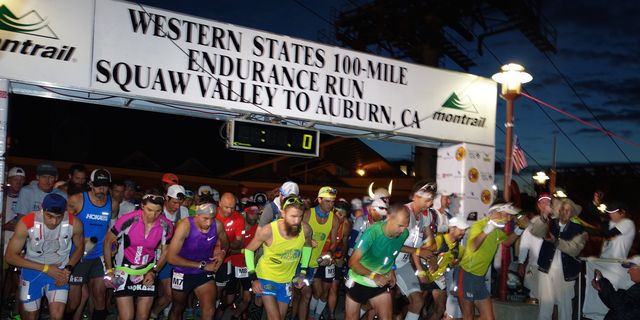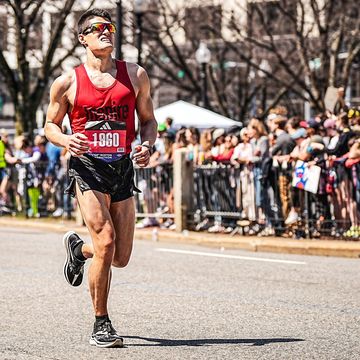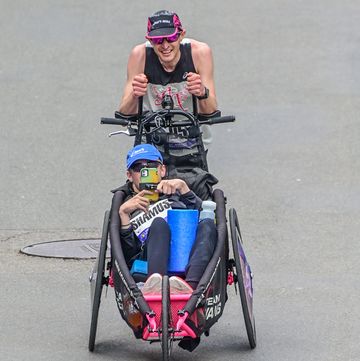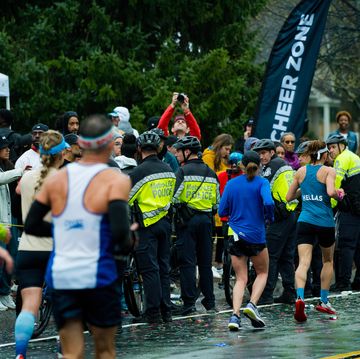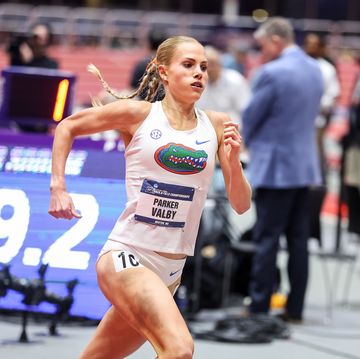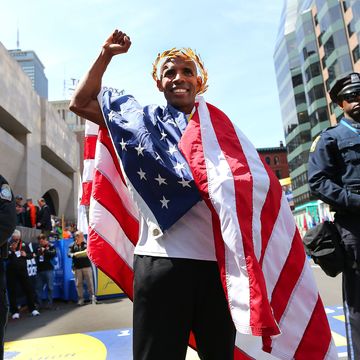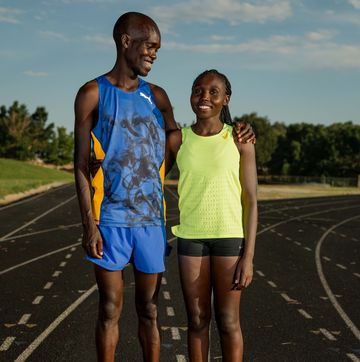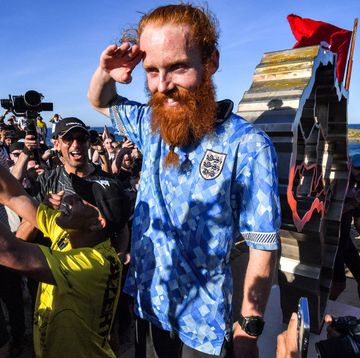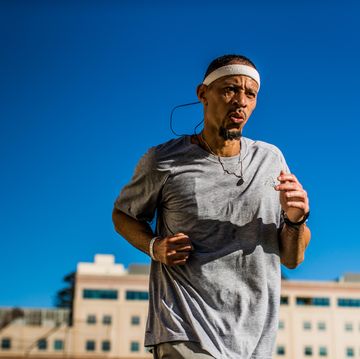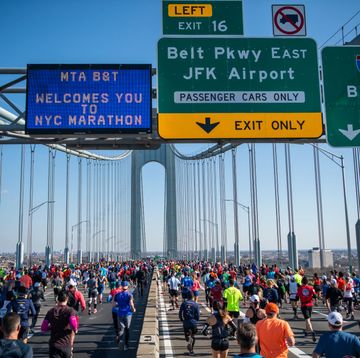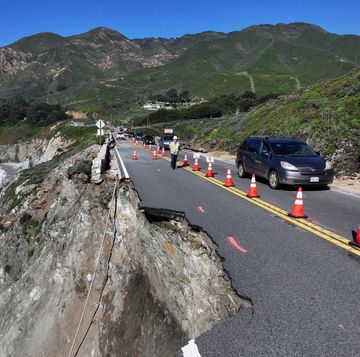Athletes who are lining up for the 2017 Western States Endurance Run, the country’s prestigious 100-mile race that starts on June 24, in Squaw Valley, California, better brush up on the World Anti-Doping Agency’s (WADA) banned substance list. Officials announced Wednesday that they will be drug testing at the Placer High School finish line for the first time this year.
The Western States board of directors has been working on creating a policy and approved a protocol that the organization is comfortable executing and can afford, said John Medinger, board president, during a phone interview with Runner’s World.
“It’s been kicking around for a while,” he said. “The activity of people in the sport and the number of sponsored athletes has gone up. There’s been more and more discussion, concern, and chatter among the athletes wanting to make sure that they’re competing on a level playing field.”
U.S. ultra and trail running has been grappling with a shifting environment for several years. The once laid-back, no frills culture has given way to one in which more corporate brands are offering sponsorship opportunities for top talent, thereby attracting faster athletes, some of whom come with road or track racing pedigrees. With the potential for financial gain also comes the temptation to cheat.
RELATED: Race Sets New Standard Against Doping in Trail Running
Many ultra race organizations lack the resources to conduct drug testing at their events. Unlike road and track racing, most aspects of ultrarunning are not governed by WADA or the International Association of Athletics Federations (IAAF) and are therefore not under the purview of the U.S. Anti-Doping Agency. The majority of top trail and ultrarunners are also not subject to out-of-competition testing, unless they have competed at high-level events like the International Association of Ultrarunners World Championships, which are governed by the IAAF.
Western States directors are dipping into the organization’s reserve funds to hire an independent third party to conduct testing at the 2017 race. Medinger said it will cost about $700 per runner tested. Providing out-of-competition testing, which puts top runners in a pool to be tested randomly without notice between races, would prove too costly—up to an estimated $10,000 per runner, Medinger said.
“From our point of view, this is the policy we’re starting with, and some people may be critical of not having any out-of-competition testing,” Medinger said. “But given where we are budget-wise and that it’s the first year we’re testing at all, it’s a start. It’s a process.”
Officials are hoping that the move serves as a deterrent for runners considering using banned substances and the policy will be an example to other ultra race organizations. The board gathered advice from counterparts at the World Marathon Majors, which is the umbrella organization of the New York City, Berlin, Boston, Chicago, London, and Tokyo marathons, as well as groups like the Clean Sport Collective, a nonprofit promoting awareness, testing, industry advocacy, and restoration of clean sport.
WATCH: Western States Leader Takes a Swim, Then a Wrong Turn
Anybody who tests positive for performance-enhancing drugs at Western States will have the opportunity to go through a standard appeals process. Should a runner be caught using an illegal substance, he or she will be banned for life from Western States.
Stephanie Howe, the 2014 Western States champion who is also competing at the race this year, welcomes the opportunity to be tested, she said.
“I’m a really naïve person—I always thought of racing is this pure thing, that people were just putting themselves out there to compete and see who’s fastest that day,” Howe said. “In the past few years I’ve been crushed to learn that some people aren’t doing it so purely.”
ALSO: How to Crew an Ultramarathon in 6 Easy Steps
Medinger’s only concern is that the presence of drug testing at the finish line might kill the low-key, celebratory vibe that the runners, crews, and spectators have always enjoyed around the track. Howe isn’t worried about it and said it’s a necessary step to add to the process.
“We all know that doping’s been in the track and field and road running scene, but ultra’s always been this place where runners traditionally weren’t doing it for the money or fame,” she said. “Now there are sponsorships and those draw faster runners. Parts of that are good for the growth of the sport, but it also makes cheating more of an issue.
“For Western States to be the first major U.S. ultra to have testing is really symbolic. They may not catch anybody, but it’s a sign that we’re not going to tolerate it, either.”
